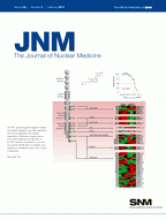LetterLetters to the Editor
Reply: Horizontal Versus Longitudinal Axis of the Hippocampus: Metabolic Differentiation as Measured with High-Resolution PET/MRI
Zang-Hee Cho, Young-Don Son, Hang-Keun Kim, Sung-Tae Kim, Sang-Yoon Lee, Je-Geun Chi, Chan-Woong Park and Young-Bo Kim
Journal of Nuclear Medicine February 2011, 52 (2) 329-330; DOI: https://doi.org/10.2967/jnumed.110.085407
Zang-Hee Cho
Young-Don Son
Hang-Keun Kim
Sung-Tae Kim
Sang-Yoon Lee
Je-Geun Chi
Chan-Woong Park
In this issue
Journal of Nuclear Medicine
Vol. 52, Issue 2
February 1, 2011
Reply: Horizontal Versus Longitudinal Axis of the Hippocampus: Metabolic Differentiation as Measured with High-Resolution PET/MRI
Zang-Hee Cho, Young-Don Son, Hang-Keun Kim, Sung-Tae Kim, Sang-Yoon Lee, Je-Geun Chi, Chan-Woong Park, Young-Bo Kim
Journal of Nuclear Medicine Feb 2011, 52 (2) 329-330; DOI: 10.2967/jnumed.110.085407
Reply: Horizontal Versus Longitudinal Axis of the Hippocampus: Metabolic Differentiation as Measured with High-Resolution PET/MRI
Zang-Hee Cho, Young-Don Son, Hang-Keun Kim, Sung-Tae Kim, Sang-Yoon Lee, Je-Geun Chi, Chan-Woong Park, Young-Bo Kim
Journal of Nuclear Medicine Feb 2011, 52 (2) 329-330; DOI: 10.2967/jnumed.110.085407
Jump to section
Related Articles
- No related articles found.
Cited By...
- No citing articles found.







